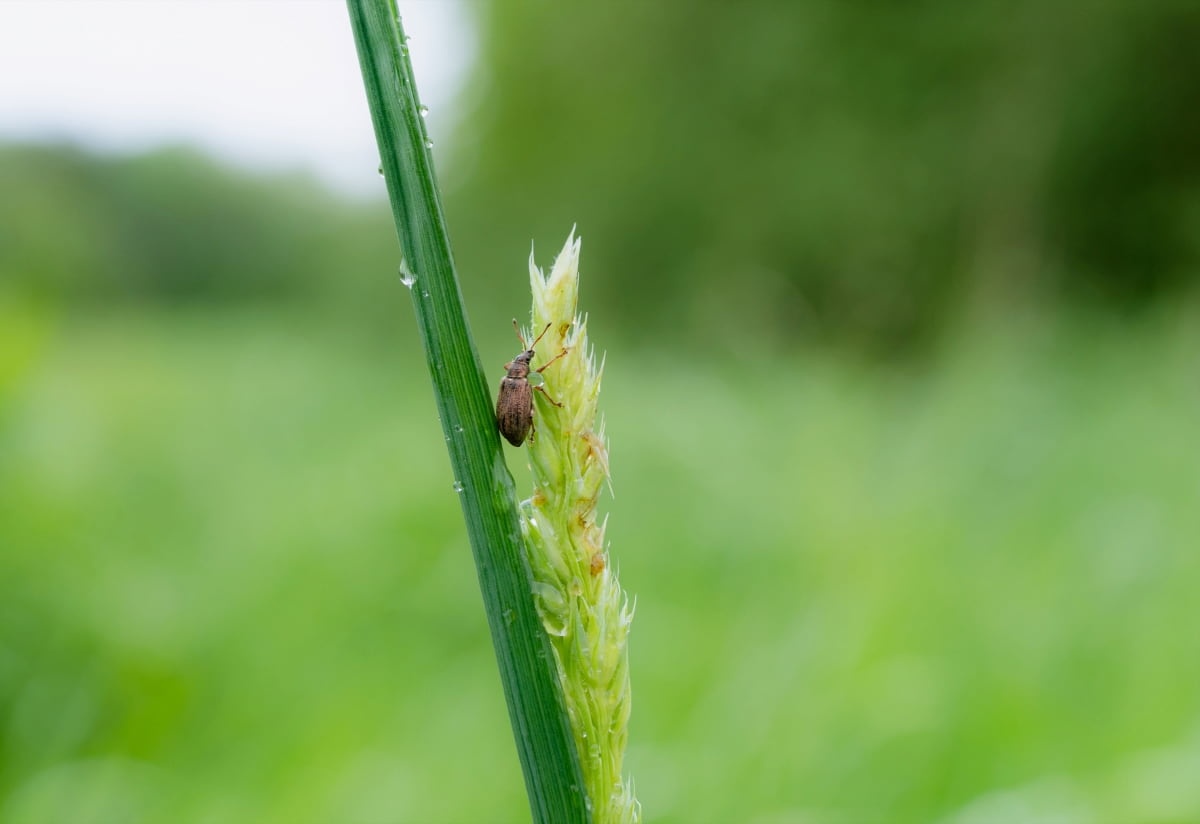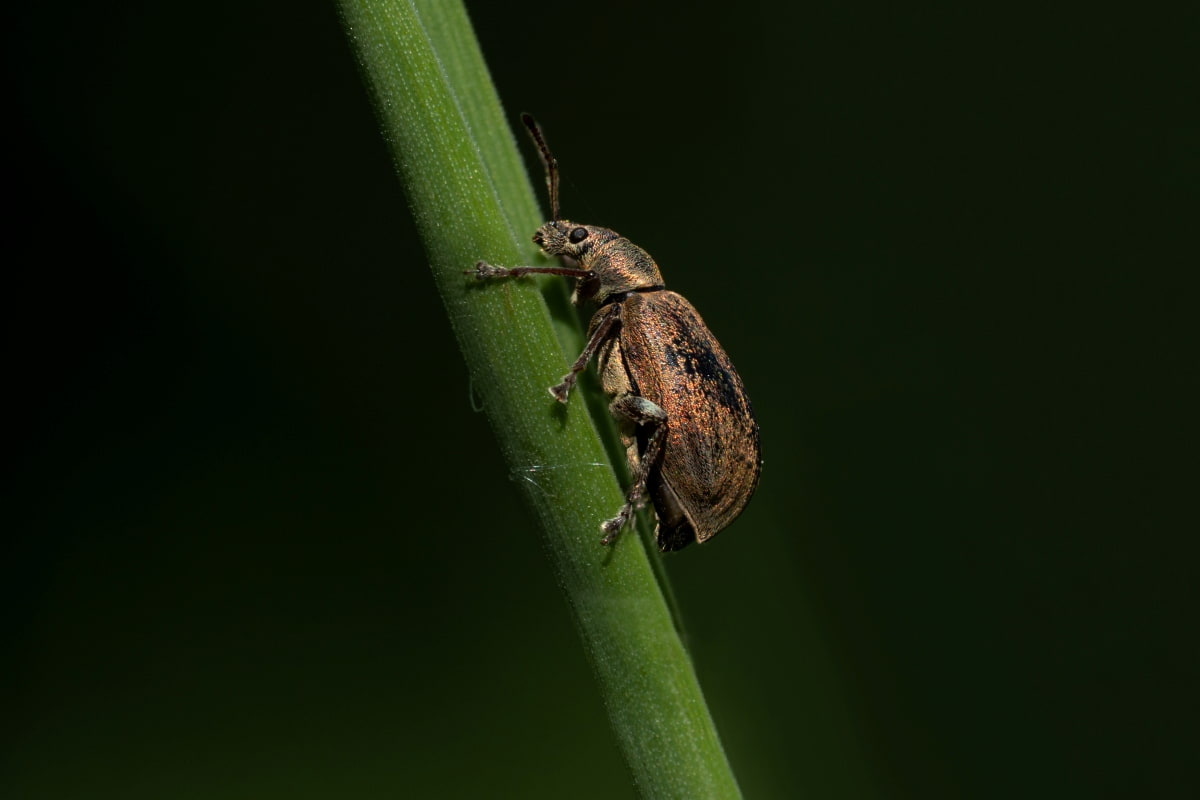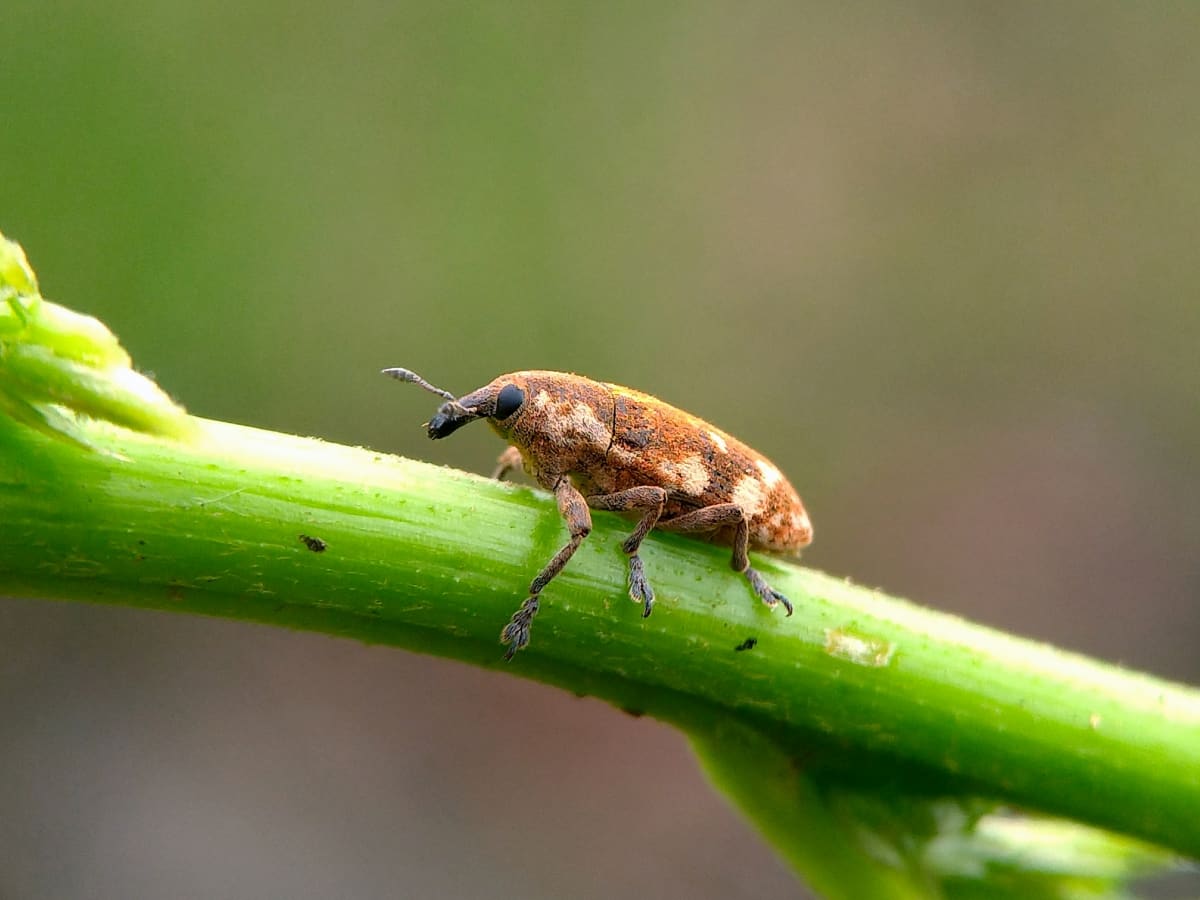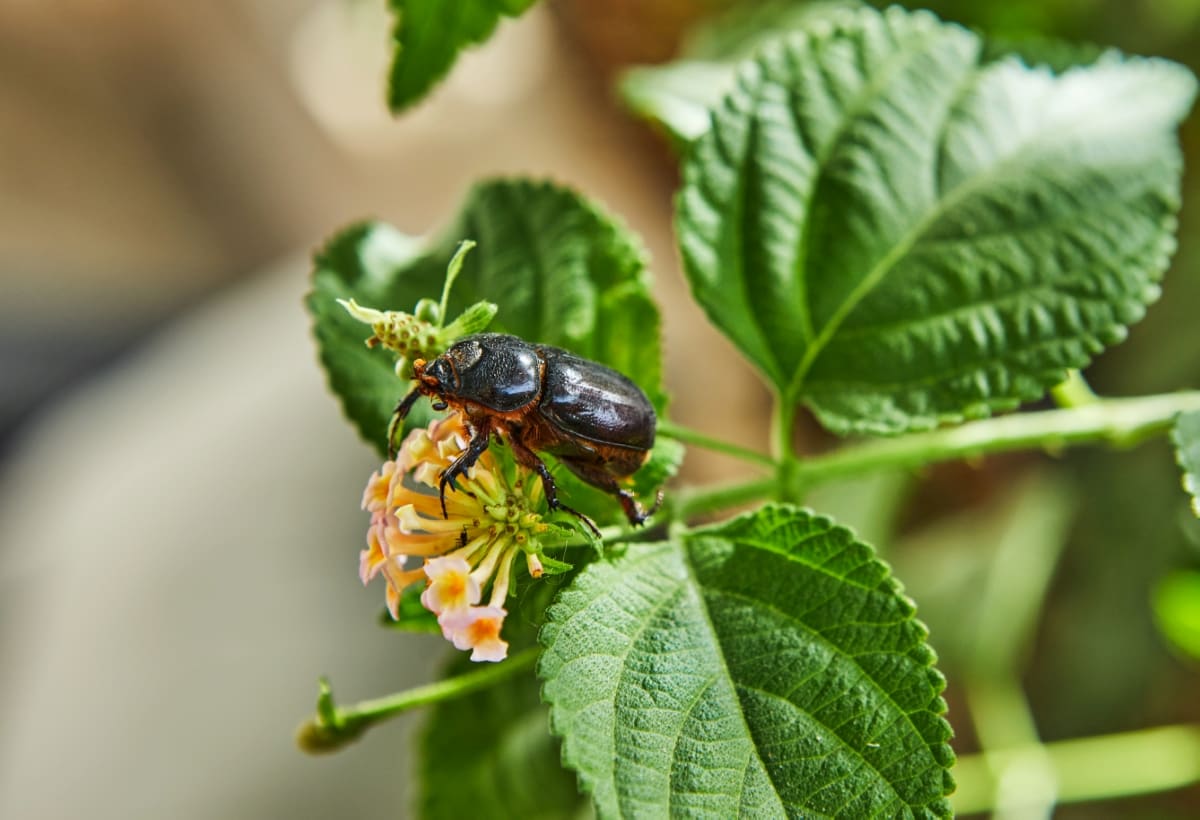Vine weevils, scientifically known as Otiorhynchus sulcatus, are notorious garden pests that pose a significant threat to a variety of plants. These small, nocturnal beetles target a broad range of ornamental plants, fruits, and vegetables, with a particular affinity for vines. Recognized by their dark color and distinctive “snout,” adult weevils feed on plant foliage, creating characteristic notches.

However, it is the larvae that inflict the most damage by devouring plant roots, leading to wilting and potential death. Controlling vine weevils often requires a multifaceted approach, combining chemical treatments, biological controls, and vigilant monitoring to protect the health and vitality of affected plants.
Homemade Remedies for Managing Vine Weevils
How to Identify Vine Weevil Damage
Identifying vine weevil damage involves observing distinct signs on plants. Look for irregular, U-shaped notches along the edges of leaves, characteristic of adult weevil feeding. Wilting or stunted growth, especially in container plants, may indicate root-feeding larvae. Lift and inspect plants; if roots appear severed or eaten, vine weevil larvae are likely culprits.
During nighttime, observe the garden with a flashlight, as adult weevils are nocturnal and may be visible on plant surfaces. Monitoring for these symptoms, particularly from late spring to early autumn, is crucial. Regular checks enable early detection and intervention, enhancing the effectiveness of control measures to safeguard plants from the detrimental impact of vine weevil infestations.
Use Natural Predators of Vine Weevils
Harnessing natural predators can be a sustainable and effective strategy to combat vine weevils. Birds such as robins and starlings are voracious consumers of adult weevils, while frogs, toads, and hedgehogs target both adults and larvae, providing a comprehensive control approach. Ground beetles, particularly the carabid species, actively prey on vine weevil eggs and larvae in soil.
Encouraging these beneficial predators by creating wildlife-friendly habitats, incorporating diverse plantings, and avoiding chemical pesticides fosters a balanced ecosystem. By promoting a natural predator-prey dynamic, gardeners can reduce reliance on synthetic interventions, contributing to ecologically sound pest management while preserving the health of plants and the broader environment.
Create a Vine Weevil Barrier with Diatomaceous Earth
Constructing a vine weevil barrier with diatomaceous earth is an eco-friendly solution. Diatomaceous earth, composed of fossilized diatoms, is a natural insect repellent. To create a barrier, sprinkle a generous layer of fine powder around the base of plants vulnerable to vine weevils.
In case you missed it: Banana Rhizome Weevil Pest Management: Symptoms, Treatment, Chemical, Biological, Natural, and Organic Control

The sharp-edged particles in the diatomaceous earth act as a physical barrier, penetrating and dehydrating the weevils as they crawl across it. Reapply after rain or watering to maintain efficacy. This non-toxic method provides a protective shield against vine weevils, supporting plant health without harming beneficial insects or the environment.
Use Nematodes to Control Vine Weevils
Employing nematodes is a biological and effective strategy for controlling vine weevils. Specifically, Steinernema kraussei or Heterorhabditis bacteriophora nematode species target vine weevil larvae in the soil. Apply nematodes during the larvae’s active period in spring or autumn. Mix nematodes with water and administer to the soil around affected plants. Once applied, nematodes infect and kill vine weevil larvae, curtailing their lifecycle.
Regular applications, especially in moist soil, enhance control efficacy. This natural, environmentally friendly method harnesses the predatory nature of nematodes to combat vine weevils, minimizing the need for chemical interventions and preserving the overall health of the garden ecosystem.
Repelling Vine Weevils with Essential Oils
Repelling vine weevils using essential oils offers a natural and aromatic alternative. Mix essential oils like neem, eucalyptus, or peppermint with water and apply the solution to plant foliage or soil around vulnerable plants. The strong scents act as a deterrent, disrupting the weevils’ feeding and egg-laying behaviors.
Regular application, especially after rain or watering, reinforces the protective barrier. This method not only repels vine weevils but also adds an aromatic fragrance to the garden. By utilizing essential oils, gardeners can achieve pest control without resorting to synthetic chemicals, promoting a healthier and more sustainable gardening approach.
Use Beneficial Plants for Deterring Vine Weevils
Incorporating beneficial plants can naturally deter vine weevils in a garden. Species like French marigolds, Alliums (onions, garlic, chives), and geraniums emit compounds that repel these pests. Planting them alongside susceptible crops or creating borders with these natural deterrents helps create a protective barrier.
The strong odors and compounds released by these plants interfere with the weevils’ feeding and reproductive activities. This companion planting approach not only enhances pest resistance but also promotes a diverse and balanced ecosystem, reducing the reliance on chemical interventions and fostering a more sustainable and resilient garden environment.
Use Homemade Vine Weevil Traps
Crafting homemade vine weevil traps provides an effective and economical solution. Fill shallow containers with a mixture of soil and sand, creating a habitat mimicking the soil surface. Place these traps strategically around affected plants, particularly during the weevils’ active season. The weevils, attracted to the trap’s simulated environment, will crawl into it.
In case you missed it: Mango Nut Weevil Pest Management: Symptoms, Treatment, Chemical, Biological, Natural, and Organic Control

Periodically check and empty the traps, disposing of captured weevils. Enhance trap efficacy by adding a layer of diatomaceous earth for additional pest control. This DIY approach is simple, environmentally friendly, and aids in reducing vine weevil populations without resorting to chemical measures, promoting a healthier garden ecosystem.
Make Soil Amendments for Vine Weevil Management
Improve soil conditions to manage vine weevils by incorporating amendments. Introduce beneficial nematodes, like Steinernema kraussei, which prey on weevil larvae. Additionally, enrich the soil with compost or well-rotted manure to enhance microbial activity, fostering an environment less conducive to weevil development. Integrate diatomaceous earth, a natural insect deterrent, to create a physical barrier.
Planting nematode-attracting species like sweet alyssum supports biological control. Ensure well-draining soil to discourage weevil egg laying. These soil amendments collectively create an inhospitable environment for vine weevils, promoting plant health and reducing the need for chemical interventions in an eco-friendly and sustainable manner.
Use Companion Planting Strategies for Vine Weevil Control
Implement companion planting to control vine weevils naturally. Intercrop susceptible plants with repellent species like French marigolds, Alliums (onions, garlic, chives), and geraniums. These companion plants emit odors and compounds that deter weevils. Consider incorporating nematode-attracting plants such as sweet alyssum to enhance biological control.
In case you missed it: Wheat Ghujhia Weevil Management in Wheat: Symptoms, Treatment, Chemical, Biological, Natural, and Organic Control

Create a diverse garden ecosystem by including predator-friendly plants like yarrow or fennel, attracting beneficial insects that feed on weevils. Rotate crops annually to disrupt the weevil’s life cycle. These strategic planting choices disrupt weevil feeding and reproduction, reducing the need for chemical interventions and fostering a resilient and balanced garden environment.
Conclusion
In conclusion, homemade remedies provide effective, eco-friendly alternatives for managing vine weevils in the garden. Whether using natural predators, essential oils, soil amendments, or traps, these DIY approaches promote a healthy, sustainable ecosystem. By minimizing reliance on synthetic chemicals, gardeners can foster a resilient and thriving garden while curbing vine weevil infestations.
- Types of Fungicides Used in Agriculture
- Common Issues in the Fruit Development Stage of Pomegranate Farming
- Fruit Development Issues in Papaya: Easy Solutions and Treatment
- Soil-Borne Diseases and How to Protect Your Plants
- Practices to Prevent Disease Spread in the Garden
- From Wilted to Thriving: How to Treat Root Rot Naturally in Houseplants
- Natural Remedies to Cure Brown Spots on Fig Tree Leaves
- Natural Solutions for Poinsettia Problems: 100% Effective Remedies
- How to Control Calla Lily Problems: Natural Remedies for Leaf and Flower Problems